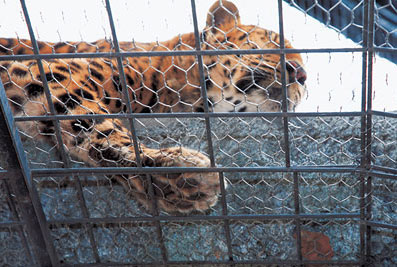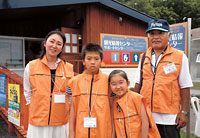Japan's Northernmost Zoo a Big Hit
An ideal zoo: Human-animal interaction
So what sparked Asahiyama Zoo's rocketing popularity? The president, Kosuge Masao, believes that "it all started when our keepers agreed we should play up the fascination of wildlife in the right environment. The idea came to us during our dark days of slumping attendance."
The zoo was originally a hit when it opened in 1967, but over time other leisure activities caught the interest of the Japanese public. Attendance went south and the zoo faced the prospect of closing. "The keepers were discouraged also because visitors complained it was boring to just look at an animal laze about and sleep. But instead of closing we decided to take a new direction — we knew our animals had lots of innate appeal, so we set out to show it."
In 1986, they began by introducing something that could be accomplished easily, the One Point Guide system. Almost all staff who cared for the animals tended to be poor at giving explanations to visitors, but they realized they would have to try. Before long they were encouraging visitors to gather round and telling them, rain or shine, about one "point" (an interesting episode) involving the animals.
They also burned the midnight oil discussing new structural designs for an ideal zoo. Their ideas were sketched out as 14 illustrations, which the zoo's president took to the mayor of Asahikawa to negotiate for support. This led to financial help from the city, the first in 16 years, and the beginning of the zoo's dramatic turn-around. In July and August 2004, more people visited Asahiyama Zoo than Ueno Zoo in Tokyo. The number of visitors was more than 2 million in fiscal 2005, and it looks like many more will have come by the end of this fiscal year.
 |

This cage for snow leopards and Amur leopards stands elevated above the ground. Leopards like high, windy, rocky places, so the cage location fits in with their preferences. An innovative way to exhibit these nocturnal animals and give visitors a different perspective on them, even when they are sleeping during the day. |
The zoo's message: The importance of life
Attendance has soared, but the zoo's president says this is not the final aim. Many of the zoo's animals are members of species threatened with extinction, something that is emphasized to visitors during munch times. For example, polar bears may be dying out because of global warming, orangutans because of destruction of their forest.
"We want our visitors to gain a real appreciation for wildlife, to regard our animals as their friends. Then they will see how wonderful animals are, and will hopefully show respect for other forms of life, develop a greater interest in their local environment, and understand the need to protect the global environment. If more people feel like that, wildlife and the planet will be preserved. And if that happens, we will have played our small part in making a better world." ![]()
Getting there:
- From Tokyo's Haneda Airport, a 100-minute flight to Asahikawa Airport. From there, a 30-minute car ride to the zoo, or a 35-minute bus ride (Asahikawa Denkikidou Bus or Dohoku Bus) to JR Asahikawa Station, then another 40-minute bus ride (Asahikawa Denkikidou Bus) from the station to the zoo.
For more information:
- Asahiyama Zoo's Chinese, English and Japanese-language website: http://www5.city.asahikawa.hokkaido.jp/asahiyamazoo/zoo/English/top.html
Tel: 0166-36-1104 (if calling from outside Japan, +81-166-36-1104)
Asahikawa Tourist Association's Japanese-language website: http://www.asta.or.jp/
Tel: 0166-23-0090 (+81-166-23-0090)

